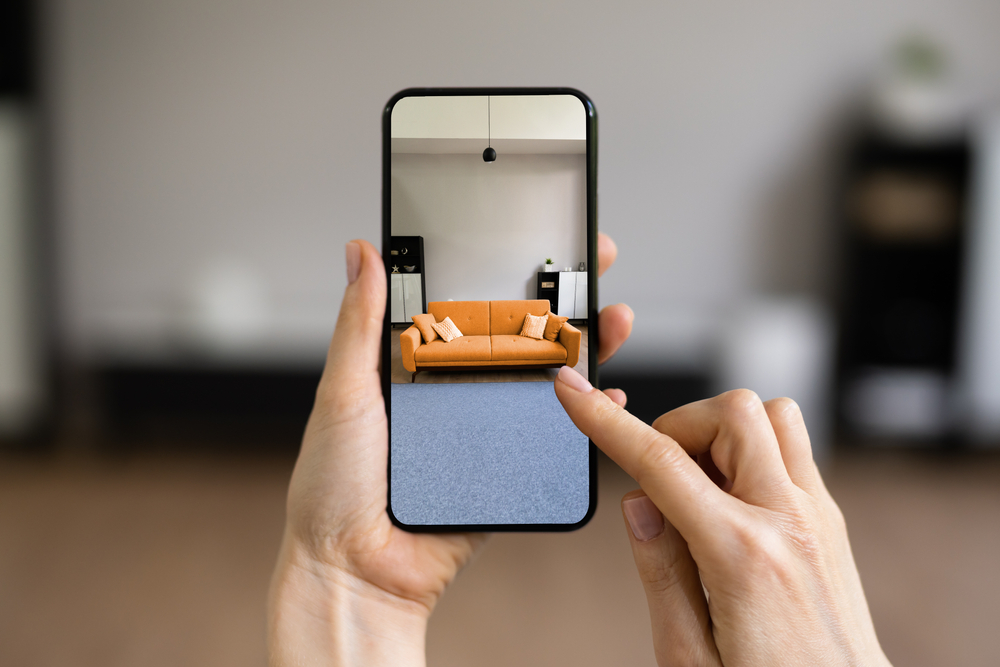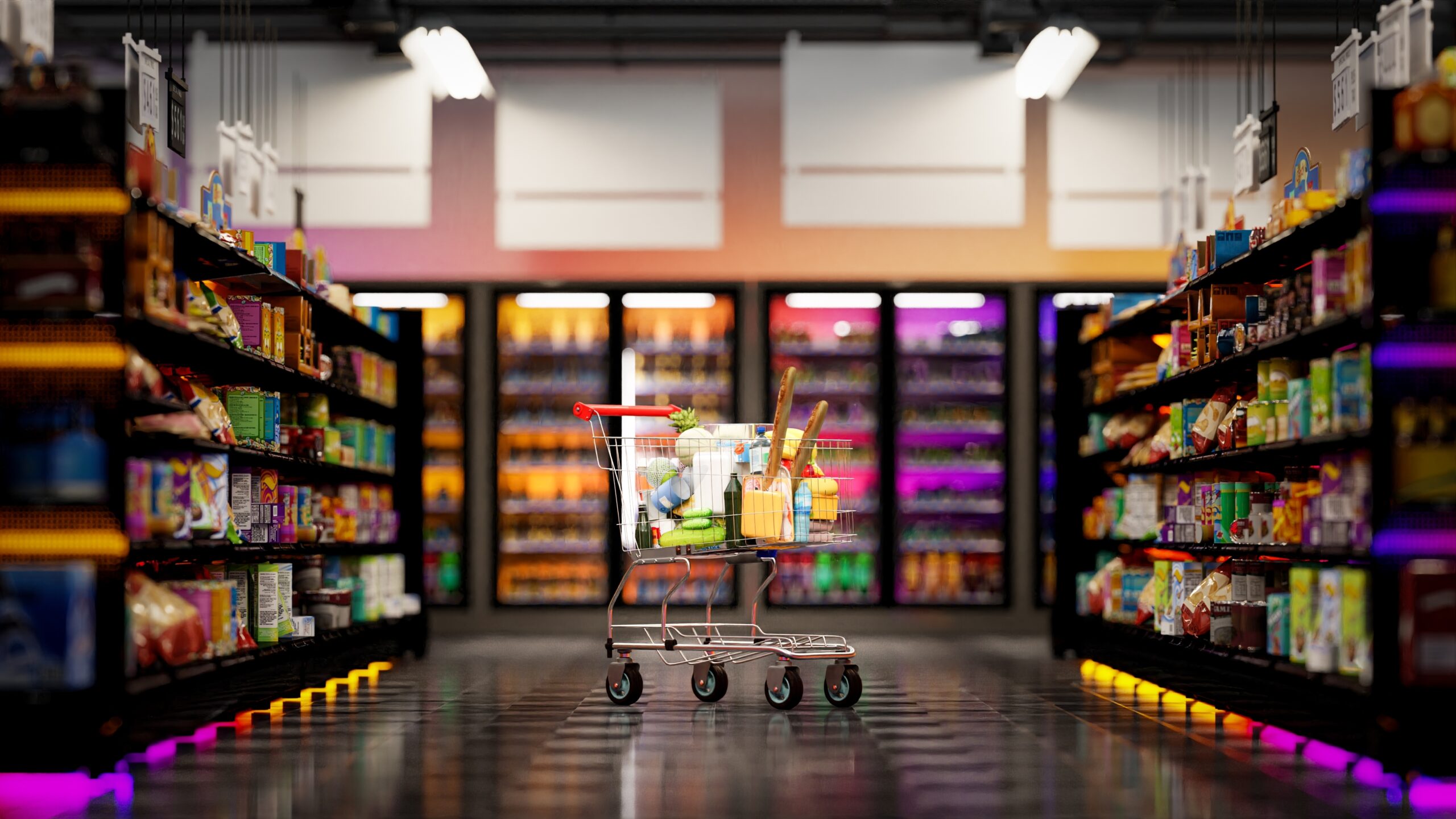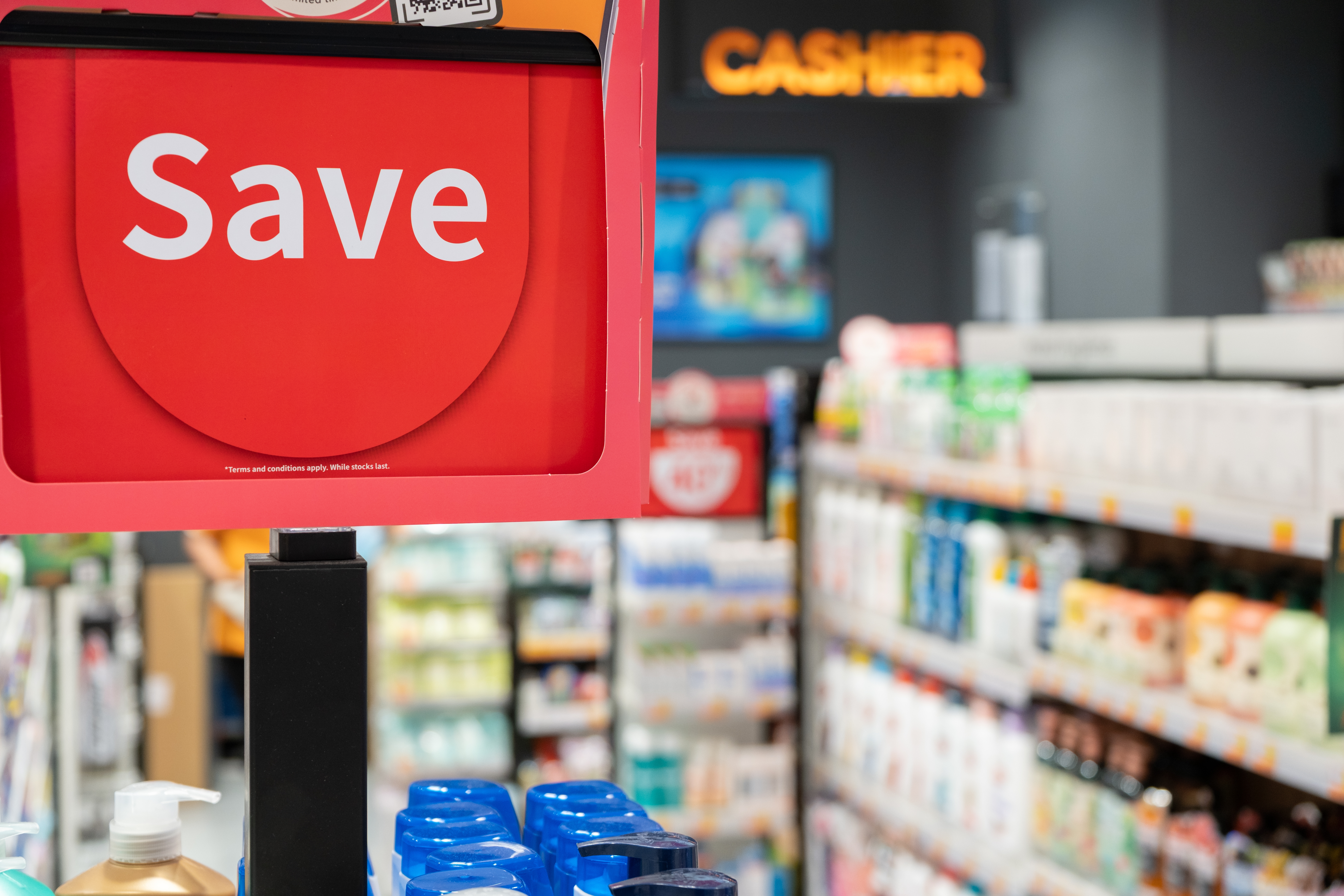From mobile apps to in-store tech, retailers are using emerging technology to meet customers where they are digitally as well as physically. And at the center of this is augmented reality (AR), a fast-moving innovation changing how people browse, try, and buy across both eCommerce and brick-and-mortar stores.
What started as a novelty has turned into one of the most useful tools in the retail industry. AR technology helps shoppers make smarter decisions by offering more context, more confidence, and more ways to interact with products before buying. Whether it’s previewing how a piece of furniture fits into your living room or experimenting with a new shade of lipstick through your phone, AR-powered features remove guesswork from the purchase process.
Retailers using AR are enhancing the customer experience with immersive, memorable touchpoints both online and in physical stores. Beyond the customer-facing benefits, AR also helps reduce return rates, protecting margins and improving long-term profitability. It drives stronger customer engagement by introducing new ways to interact with products through dynamic digital content, enriching the in-store experience and strengthening brand awareness.
In this guide, we’ll explain what AR looks like in action and how it’s already reshaping retail. Whether you’re experimenting with your first AR app or optimizing your existing in-store displays, the future of retail starts here.
What Is Augmented Reality?
Augmented reality enhances your real-life environment by layering in digital visuals and information. Unlike virtual reality, which fully immerses you in a digital space, AR keeps you grounded in your surroundings while adding interactive content—animation, product data, 3D models—on top of what your phone or tablet camera sees.
If you’ve ever used a Snapchat filter, followed virtual arrows in a navigation app, or tried out furniture in your living room through IKEA’s app, you’ve experienced AR in action. Museums use it to bring exhibits to life, educators use it to visualize complex concepts, and healthcare professionals use it to simulate surgeries. AR experiences are popping up everywhere because the technology is now mobile, intuitive, and widely accessible.
And thanks to advancements in emerging technology, AR isn’t just for brands with sizable tech budgets. What used to require bulky hardware or expensive installations now works through smartphones and tablets. Many AR apps run seamlessly on mobile devices or in-store tablets, making them easy to deploy in eCommerce and physical stores alike. From virtual fitting rooms to interactive shelf displays, AR features are quickly moving from nice-to-have to expected, and they’re becoming essential for delivering a personalized shopping experience across retail stores.
Customers expect more from their shopping experience than ever before. They want convenience, accuracy, and personalization, and they want it whether they’re shopping from the couch or walking into a store. Retailers can use AR to ease common points of friction. For instance, shoppers can hold their phones up to a store display and watch a product demo play out in real time or stand in front of their phone screen and use a virtual fitting room to try on clothing while at home. These augmented reality experiences make physical products easier to evaluate—and easier to fall in love with.
How AR Works Across the Retail Experience
Augmented reality supports the entire retail ecosystem. Whether customers engage with an AR app at home or browse products inside a brick-and-mortar store, AR helps turn interest into action. It creates a more connected, intuitive customer experience while making internal operations smarter and more agile for retail teams. These applications support smarter purchasing decisions and boost customer satisfaction by providing timely, relevant information throughout the shopping journey.
In-Store Applications
AR elevates the in-person shopping experience by adding a layer of interactivity to physical products. Smart mirrors let customers preview clothing in different colors or styles without trying them on. When scanned, packaging and signage can trigger how-to videos, tutorials, or 3D demos. Personalized promotions can appear in real time based on what a shopper is viewing, encouraging deeper engagement with minimal friction.
Online Shopping Experiences
AR helps fill the gaps in the eCommerce shopping experience. Virtual try-on tools for apparel, eyewear, cosmetics, and shoes let shoppers see how products will look on them before checking out. AR-based fit prediction and room-scale product visualization give online shoppers more confidence and increase conversion rates—and reduce return rates as well.
Apps such as IKEA Kreativ allow users to drop true-to-scale furniture into their home environment using their phones, helping eliminate uncertainty and make faster decisions. Amazon’s AR View offers similar features for thousands of home products. And while AR can’t help shoppers taste products—yet—wine brand 19 Crimes found a playful way to integrate AR: It uses scannable labels that bring the characters featured on its bottles to life.
Blended and Cross-Channel Experiences
One of AR’s biggest strengths is its ability to bridge the digital and physical retail worlds. A customer might scan a product in-store and continue exploring related content through a branded AR app at home. Some brands use gamification, such as AR scavenger hunts or loyalty rewards tied to in-store activity, to keep shoppers engaged across platforms. These immersive experiences blur the line between the physical world and digital content, reinforcing brand loyalty while providing customers with more value at every step.
Behind-the-Scenes Value
AR isn’t just for consumers. Retailers use it internally to preview merchandising layouts, review planograms, and collaborate on marketing campaigns. Teams can visualize how displays look and function before installing them in stores. That leads to more efficient workflows, fewer costly adjustments, and faster execution of new retail strategies.
Getting Started with AR in Retail
The tools and use cases for adopting augmented reality are already here, and retailers who implement the technology now will be better positioned to lead going forward. InContext’s AR field execution tool, SMX GO, shows how augmented reality can empower internal retail teams. SMX GO is a mobile app that lets store teams and brand partners visualize 3D product assets in the actual retail environment—on a shelf, in an aisle, or at the front of the store. No guesswork, no generic mockups: just a real-time, real-world view of how displays or signage will look and function before installation.
With SMX GO, teams can:
- Walk the store floor and overlay planograms using their mobile device
- Collaborate across teams and locations with shared 3D visuals
- Identify points of interruption and adjust layouts on the spot
- Streamline the sell-in process by giving retailers a clearer vision of execution
This kind of agility is efficient and persuasive. By removing the friction from the planning process, SMX GO helps teams secure buy-in faster, reduce miscommunication, and get to market quicker with better-aligned strategies. It’s a clear example of how augmented reality can support customer-facing innovation and operational execution.
If you’re not sure where to begin, start small. Use AR to solve a specific challenge, like helping customers visualize products or improving communication between your field and HQ teams. From there, you can scale. Many AR tools are modular, so it’s possible to build your strategy over time without overhauling your tech stack or retraining entire departments.
Another way to get started? Use AR to test ideas before investing heavily. With solutions such as SMX GO, you can virtually walk through a display concept and refine it on the spot, before anything ships or gets installed. That saves time, budget, and headaches later.
Whether enhancing the user experience through an AR app or bringing store concepts to life with 3D visualization, now is the time to explore what AR can do for your business.
Partner with InContext Today
Augmented reality is already shaping how customers browse, buy, and connect with brands. From creating virtual fitting rooms to placing a virtual sofa in someone’s living room with just a tap, AR technology delivers real-world value across every touchpoint in the retail experience.
InContext’s powerful AR tools, including the SMX GO app, make implementing augmented reality experiences easier than ever. Whether you’re optimizing store execution, improving planogram sell-in, or building customer-facing features, we’re here to help you move fast and build smarter.
Let’s create the next era of retail—together.




